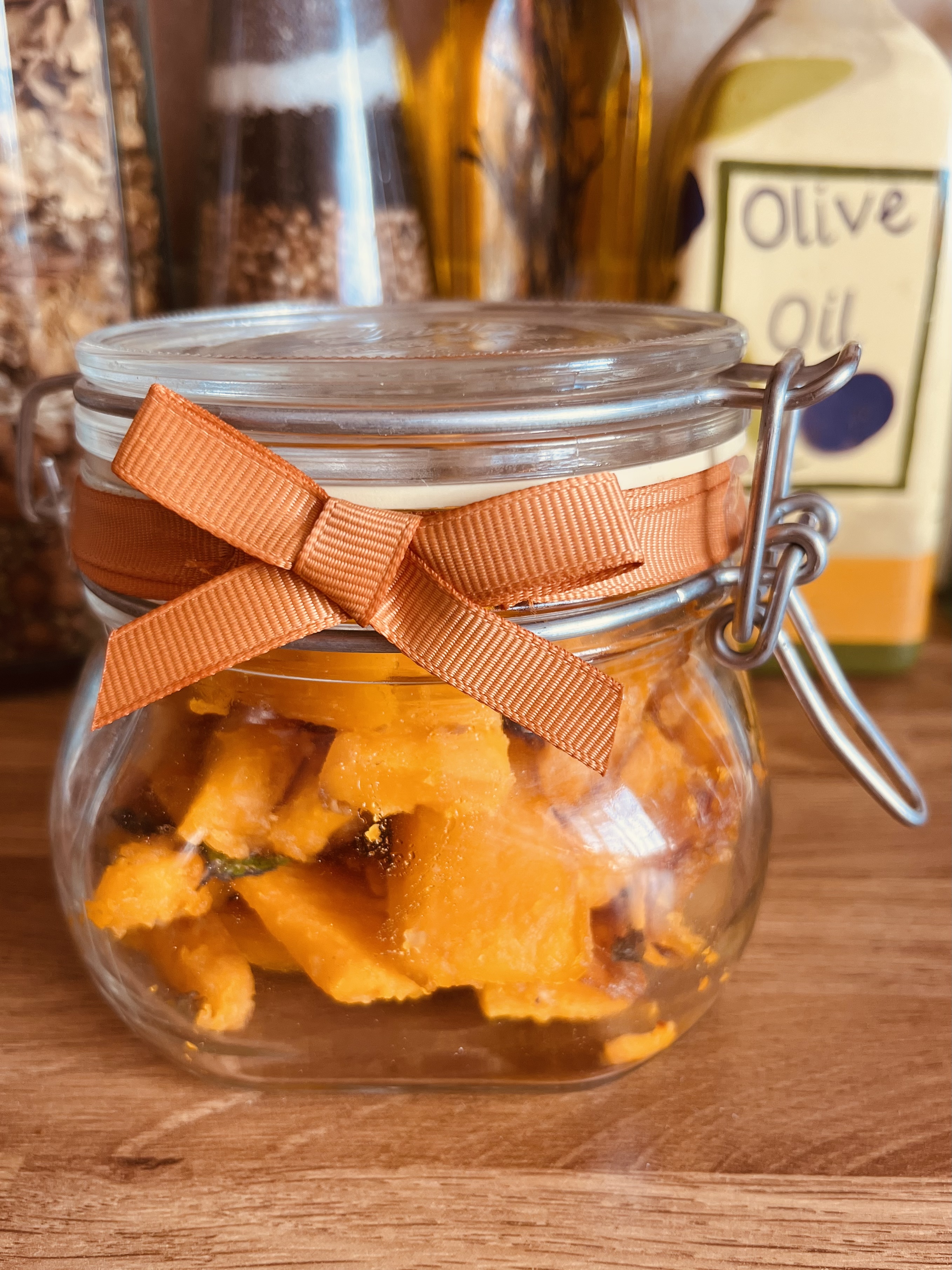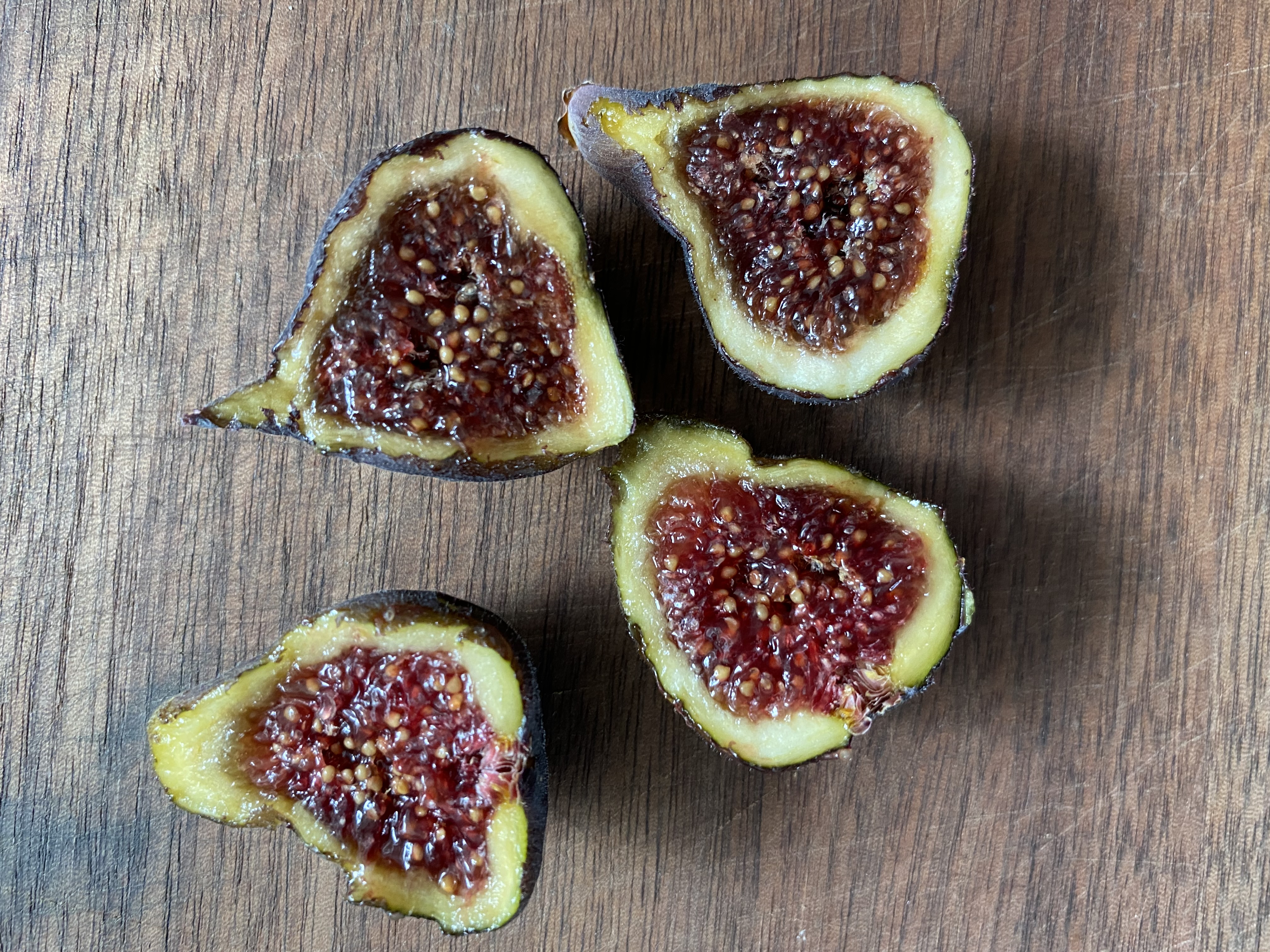Stop. Before you toss those jack-o-lantern scraps, consider saving them for a classic Sicilian pumpkin recipe. Believed to have originated in Palermo's popular Vucciria market, zucca in agrodolce (sweet and sour pumpkin) is a simple seasonal side dish that's sure to impress your most discerning supper guests.
Blogger Sarah Kearney of White Almond Sicily has a lovely rendition of this flavorful pumpkin recipe.
We chatted about her connection to Sicily, what inspired this dish, how to select the perfect pumpkin, and excellent zucca in agrodolce pairings.
Tell me about your background. What is your connection to Sicily?
My parents were English, and I was born in the UK and grew up in an area in South London where there were a lot of Italian families. I went to school with many Italian-descendant children, and their birthday parties and invitations to their homes were always so fascinating and fun. I just loved sitting around the big family table eating pizza, pasta, and gelato, receiving lots of Italian warmth and hospitality. As I grew up, I knew that I wanted to visit Italy. Whilst other children my age were filling scrapbooks with photos of their favorite pop stars, I would be dragging my parents to our local travel agent to pick up travel brochures so I could cut out the photos of Italy and create my own Italy travel brochure.
In 2005, I read a travel article in a fashion magazine about Taormina in Sicily. With my love of all things Italian and my husband's love of The Godfather movies, Sicily seemed like our kind of destination. So, after some research, I booked a weekend getaway to Taormina, and as soon as we saw the volcano Mount Etna from our airplane window, we knew we had already fallen in love with the island. Two years later, we bought our Sicilian home in Giardini Naxos, a seaside town nestled between the slopes of Etna, Taormina, and the Ionian Sea.
How did your life change?
Coming from London, we are used to a fast-paced life, and over the past 17 years, we have learned to live life the way the Sicilians do. We learned to shop more locally at our local butchers, fish shops, and bakeries instead of using supermarkets and buying our fruit and vegetables from markets. Our taste buds changed with the fresh produce we were buying.
We joined the evening passeggiata along our seafront with our dogs. In the beginning, we used to zoom along, overtaking the locals, but now we take our time like the Sicilians and maybe stop at a bar for an aperitif or coffee or sit on the seawall eating a gelato. A five-minute walk to the seafront can turn into an hour's walk with locals stopping to talk to us. In Sicily, we have made more friends than we ever have in London, and we have been adopted by many Sicilian families, who see us as one of them now.
What inspired you to share the recipe for Sicilian sweet and sour pumpkin?
In 2014, I started to write my blog, "White Almond Sicily," and a friend from London came to stay with us. It was his first visit to the island, and we discussed how not many English people visit Sicily or know much about its beauty, food, and culture. Thereafter, I started writing about our new life in Sicily, the places we visited, and the people we met. I decided to also share recipes for popular Sicilian dishes that our new Sicilian friends had made for us.
We now divide our time between London and Giardini Naxos, and my favorite seasons are spring and autumn when the island boasts an abundance of delicious fruit and vegetables. Autumn is a wonderful time of year to stay in Sicily with the grape harvest to make new wine, olives are harvested to make olive oil, trees are heavy with apples, prickly pears are in season, and there are food festivals that celebrate hazelnuts and walnuts. It is also the season for hearty meals like stews and risotto, with the most popular use being seasonal vegetables like pumpkins.
You will see pumpkins at markets or on the roadside piled up by local farmers on their three-wheeled Ape vehicles, a bit like what you see with watermelons in summer. I love Halloween, so I always like to carve a pumpkin into a lantern, which gives me the perfect excuse to use the leftover flesh to make Sicilian sweet and sour pumpkin.
Can you tell us more about the historical and cultural significance of this dish in Sicily?
Like a lot of vegetable dishes in Sicily, pumpkins were used in poor times to replace meat, and the pumpkin was used as an equivalent to liver. The dish is thought to have originated in Palermo in the famous Vucciria market.
The rich aristocratic families would buy expensive liver, which would be fried and marinated in a sweet and sour way and then garnished with fresh mint. The poor could not afford the meat, so instead, they bought slices of pumpkin, which was cheap, and cooked it in the same way.
The dish was known locally as o ficatu ri setti cannola (the liver of the seven taps), which refers to seven taps at the seven fountains located near the market where the street vendors selling the pumpkins would be daily.
Do you have any personal stories associated with making or eating sweet and sour pumpkin?
We usually drive from London to Sicily with our dogs, and after three days of traveling, on our first day back home in our Sicilian house, our neighbors always visit bearing gifts, usually food. It is quite often that we will return home and have a delivery from what we call "the lemon fairy" and find a bag full of lemons hooked onto the door knob of our front door. Last year, a neighbor gave us a crate of persimmons, which I made into a delicious jam, and of course, he was given a jar, much to his delight.
I can remember the father of one of our friends, who owns a big plot of land on Etna, arriving at our house with the biggest pumpkin I had ever seen. I could hardly carry it. Of course, I used it to carve a Halloween pumpkin and made a sweet and sour Pumpkin with the remains. There was so much that I was able to preserve it in empty jars to bring back home to London.
I first tried this dish in a Sicilian restaurant in London, which was owned at the time by Enzo Oliveri, a well-known Sicilian chef from Palermo who now lives in the UK. It was Enzo who first told me how to make the dish in a similar way to another popular Sicilian dish, caponata.
What tips do you have for selecting the best pumpkin for this recipe?
In Sicily, I always trust the vendor to choose the best pumpkin for me, but when in London, I always look for firm and smooth pumpkins that feel heavy for their size. Then, I know that there is plenty of flesh inside, and I avoid any pumpkins with cracks or bruises. We do not get pumpkins in London like those in Sicily; the ones in Sicily have a unique taste from being grown on fertile volcanic soil.
How do you balance the sweet and sour flavors in this dish to achieve the perfect taste?
I use one tablespoon of sugar and two tablespoons of vinegar for the agrodolce (sweet and sour) taste. Sicilians tend to use white vinegar for this dish, but I like to use red wine vinegar. It gives the pumpkin a ruby-colored hue that makes the dish look a bit more exotic and gleam like Sicilian jewels.
What other traditional Sicilian dishes would you suggest pairing with sweet and sour pumpkin?
In Sicily, this dish is usually regarded as a side dish or used as part of antipasti paired with other delicacies like caponata or melanzana parmigiana, together with local cured meats, cheeses, olives, and sun-dried tomatoes. As a side dish, we enjoy it with grilled meats or salsiccia, a Sicilian sausage made with coarsely chopped pork and usually containing fennel seeds.
Can you share any common mistakes to avoid when preparing this dish?
It is all about getting the balance of the sweet and sour correct. Too much vinegar and the dish can become acidic. Too much sugar will make it hard to savor all the other flavors. Always leave the ingredients to mingle. You also need to add finely chopped fresh mint to garnish, as this brings out the flavors like a tastebud explosion in your mouth. Mint is a very typical ingredient in Sicilian cuisine from when the island was under Arab rule.
What feedback have you received from readers who have tried this recipe?
This recipe is mostly viewed in autumn months, and most of my blog followers love that it is a lesser-known Sicilian dish to create and try. It is particularly great for children as all kids enjoy carving a Halloween pumpkin, so it is a great way to introduce this vegetable into their diet.
What do you hope readers take away from your White Almond recipes?
My philosophy is to share the delights of Sicily through its culture and food using my own experience of living on and traveling around the island. I love that I can share recipes that I have learned locally with readers, who can then recreate dishes that they have tasted whilst in Sicily when they return to their own home kitchens.
>>Get Sarah's zucca in agrodolce recipe here!<<
If you enjoyed this article, consider subscribing to my newsletter for more content and updates!



